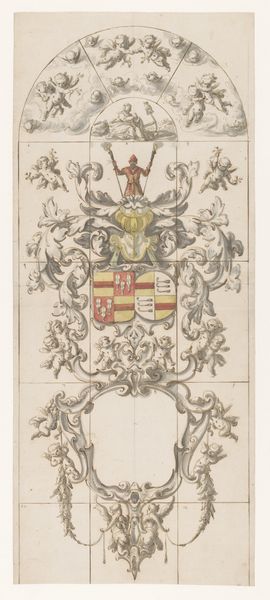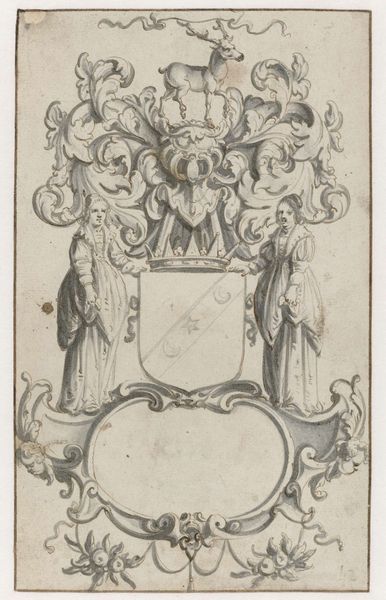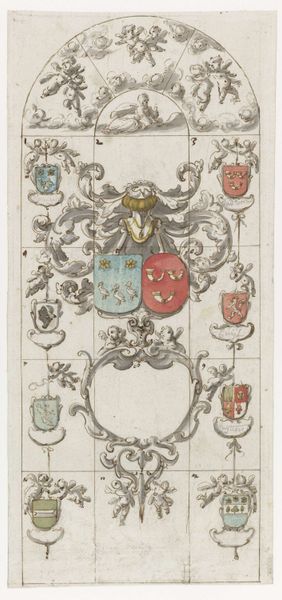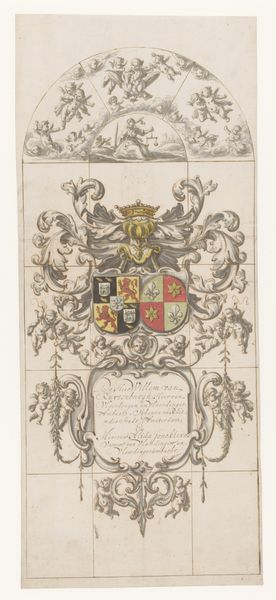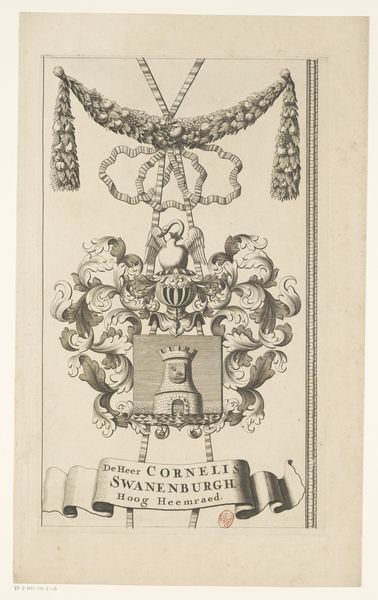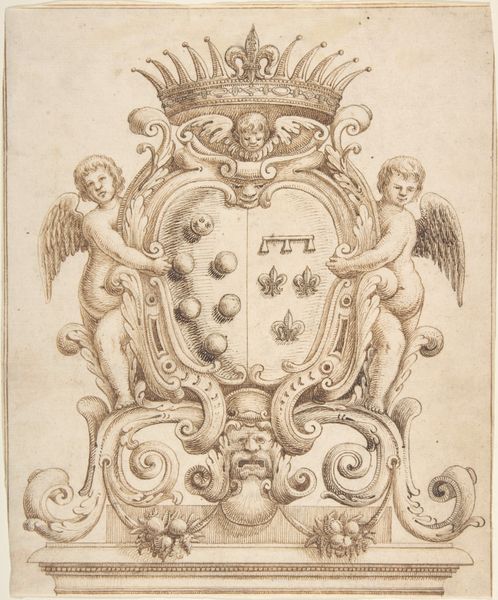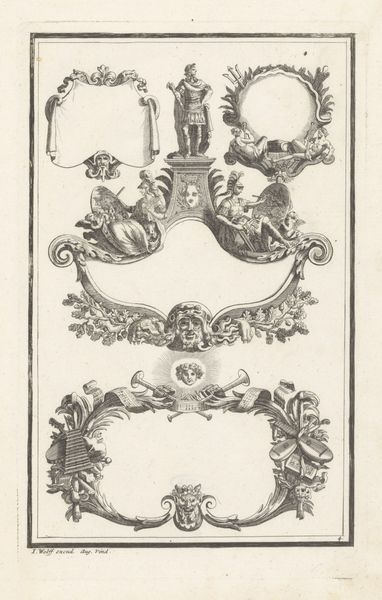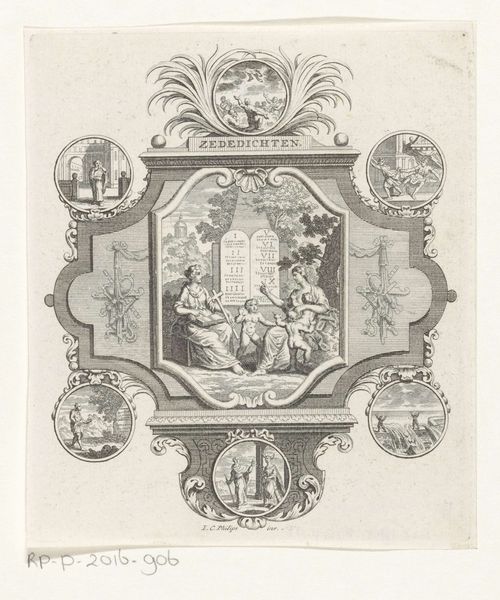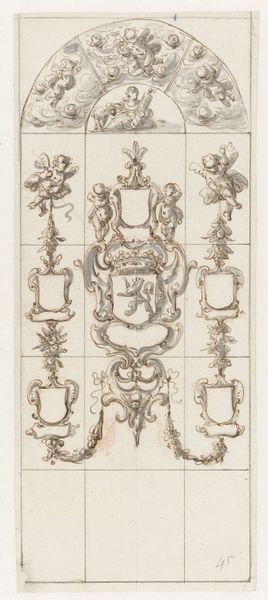
drawing, ink, pen
#
drawing
#
baroque
#
pen drawing
#
ink
#
pen work
#
pen
Dimensions: height 552 mm, width 228 mm
Copyright: Rijks Museum: Open Domain
Curator: So, here we have "Design for stained glass window seven in the church at Oudshoorn" crafted between 1663 and 1667 by Pieter Jansz. It's primarily a pen and ink drawing. Editor: It feels very ornate, almost like a playful blueprint for a grand fairytale crest. So many cherubs! It definitely has that slightly faded, aged grandeur about it. Curator: Exactly. The cherubs up top are very representative of Baroque sensibilities, framing that heraldic shield—they speak to the cultural emphasis on symbolism of the period. Note also, the eagles crowning the shield, symbolizing power and dominion and those whimsical leaf ornaments and a space beneath waiting to be filled. Editor: Those empty shields do invite speculation, don't they? Imagining what family or figures these symbols might've represented... Perhaps the window never made it, so they were never assigned. A stain glass piece always has such emotional gravity, whether somber, lighthearted, or ethereal. Curator: Or it might simply suggest different layers of influence. See those two smaller shields right at the center? On one we can see a crowned animal—maybe a deer? What is it saying about the subject matter? Was this individual linked to nobility but also with ties to nature? The details in this drawing were chosen deliberately, each animal, figure, crest bearing specific allegorical significance within the period and the commission it was designed for. Editor: That makes me consider this artwork’s temporal dimensions—it's not just about faith; but also personal legacies. A lasting name rendered not just through narrative, but visual spectacle. This piece feels, well, incredibly thoughtful; so rich in layers, quite literally, if you can picture its construction in stained glass and installed at its Oudshoorn church. Curator: Precisely. It showcases the baroque aesthetics but rooted in history, the way social identity became associated to iconography. The piece serves as both an object of contemplation and a marker of identity within the church’s communal space. Editor: I’m looking at this, almost like piecing together a story from faded memories and artistic expression. Curator: I completely agree. The drawing offers a window into a world of inherited symbols, while the emptiness creates space for imagination. Editor: And perhaps a lingering curiosity regarding unwritten tales of yesteryear... It holds an alluringly unfinished feeling for a design about the most elevated concepts.
Comments
No comments
Be the first to comment and join the conversation on the ultimate creative platform.
